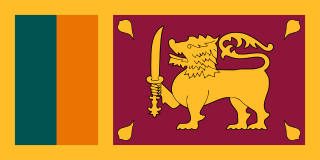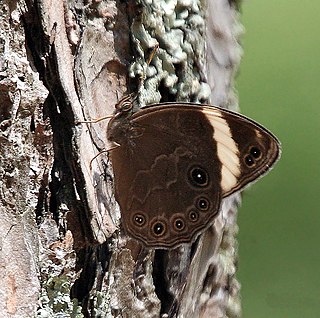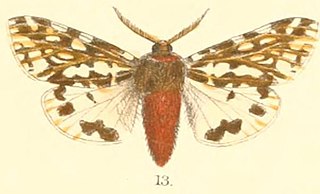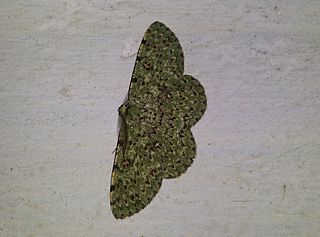
Sri Lanka, historically known as Ceylon and officially the Democratic Socialist Republic of Sri Lanka, is an island country in South Asia. It lies in the Indian Ocean, southwest of the Bay of Bengal, separated from the Indian peninsula by the Gulf of Mannar and the Palk Strait. It shares a maritime border with the Maldives in the southwest and India in the northwest.

Mahinda Rajapaksa is a Sri Lankan politician. He served as the President of Sri Lanka from 2005 to 2015; the Prime Minister of Sri Lanka from 2004 to 2005, 2018, and 2019 to 2022; the Leader of the Opposition from 2002 to 2004 and 2018 to 2019, and the Minister of Finance from 2005 to 2015 and 2019 to 2021. He has been a Member of Parliament (MP) for Kurunegala since 2015.

Hambantota is the main town in Hambantota District, Southern Province, Sri Lanka.

Lethe is a butterfly genus from the subfamily Satyrinae in the family Nymphalidae. The genus was erected by Jacob Hübner in 1819. It includes the treebrowns, woodbrowns, foresters and their relatives. The species in the genus Lethe occur in temperate-tropical southern and eastern Asia, up to Indonesia and in North America.

The Sri Lanka Air Force is the air arm and the youngest of the Sri Lanka Armed Forces. It was founded in 1951 as the Royal Ceylon Air Force (RCyAF) with the assistance of the Royal Air Force (RAF). The SLAF played a major role throughout the Sri Lankan Civil War. The SLAF operates more than 160 aircraft.

Red-bodied swallowtails, or ruby swallowtail (due to the color), are butterflies in the swallowtail family, that belong to the genera Atrophaneura, Byasa, Losaria, or Pachliopta. They are generally found in Asia.

Dactylethrella is a genus of moths in the family Gelechiidae. The genus was described by Thomas Bainbrigge Fletcher in 1940 and is a replacement name for Dactylethra Meyrick (preoccupied).

Alphaea is a genus of tiger moths in the family Erebidae. The genus was erected by Francis Walker in 1855. They are found on India, Sri Lanka, Myanmar and Java only.

Ophthalmitis is a genus of geometer moths in the Boarmiini tribe.

Holcoderus is a genus in the beetle family Carabidae. There are more than 20 described species in Holcoderus.

Pseudomicronia is a genus of moths in the family Uraniidae.
Ophthalmitis caritaria is a moth of the family Geometridae first described by Francis Walker in 1860. It is found in Sri Lanka.

Ophthalmitis herbidaria is a moth of the family Geometridae first described by Achille Guenée in 1858. It is found in China, India, Sri Lanka, Nepal, Hong Kong and Taiwan.
Baoris penicillata, the Paintbrush swift, is a species of butterfly belonging to the family Hesperiidae. It is found in India, Sri Lanka, Thailand, Malaysia, Myanmar, Vietnam, Laos, and recently from China.

The Sri Lankan economic crisis is an ongoing crisis in Sri Lanka that started in 2019. It is the country's worst economic crisis since its independence in 1948. It has led to unprecedented levels of inflation, near-depletion of foreign exchange reserves, shortages of medical supplies, and an increase in prices of basic commodities. The crisis is said to have begun due to multiple compounding factors like tax cuts, money creation, a nationwide policy to shift to organic or biological farming, the 2019 Sri Lanka Easter bombings, and the impact of the COVID-19 pandemic in Sri Lanka. The subsequent economic hardships resulted in the 2022 Sri Lankan protests. Sri Lanka received a lifeline in the form of an Indian line of credit amounting to $4 billion. This substantial credit infusion served to cover the costs of importing essential goods and fuel. As a result, the foreign currency reserves of debt-ridden Sri Lanka experienced a notable improvement, reaching $2.69 billion.













